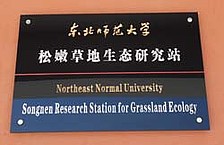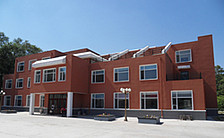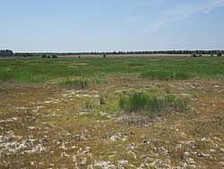Grassland restoration in Northern China from a whole plant perspective (GrassRest)
(GIZ/BMZ small grant)
Project duration: 2011-2013
Project Description:
Inner Mongolia grasslands of Northern China are representative for large areas of the Eurasian steppe belt (Bai et al. 2004). These ecosystems, ranging from South-Eastern Europe to Mongolia and Northern China are the livelihood base for millions of livestock farmers. In Inner Mongolia, the replacement of nomadic and semi-nomadic pastoralists by stationary livestock farming systems during the last three decades and the simultaneous increase of livestock from 5 to more than 20 million ungulates resulted in extensive degradation affecting more than 80% of the natural grasslands (Zhang et al. 2004, Tong et al. 2004).
Overgrazing can amplify effects of wind and water erosion, increase soil compaction and the encroachment of less palatable plant species, induce the loss of soil carbon and nitrogen stocks, and reduce soil fertility (Steffens et al. 2008, 2009, Gao et al. 2009). In addition to consequences of overgrazing, effects of climate change are threatening the natural grasslands through increased variability of rainfall and raising temperatures (IPCC 2007).
In the recent years distinct measures were undertaken to decrease grazing pressure and mitigate grassland degradation. In this context, restoration ecology became more and more important to cope with grassland degradation and to develop management options to improve grassland quality towards a sustainable livestock based land-use system (Jiang et al. 2006, Li et al. 2007, 2008). Overgrazing and climate change result in unpredictable effects on grassland productivity due to multiple feedbacks on resources availability. During the restoration process, the limited availability of resources often constrain plant establishment and growth, but most research approaches focus on aboveground plant productivity dynamics to assess restoration progress rather than following a whole plant perspective including the belowground part.
In temperate steppe ecosystems plant carbon is predominantly located belowground and it is evident that resource allocation between shoot and root plays an important role in ecosystem’s resilience in response to multiple stresses (Gao et al. 2008, Giese et al. 2009). Plant species of steppe ecosystems are usually well adapted to water stress and harsh winter conditions of the continental climate by storing nutrients and carbohydrates in perennial belowground organs. A depletion of these belowground resources increases vulnerability of plants to stress periods and endangers the restoration process.
The belowground response of grassland plants to multiple stresses thus can be a key process in grassland restoration and ecosystem’s adaptation capacity to climate variability or change. Therefore, assessing different restoration techniques from a whole plant perspective will contribute to optimize grassland management towards a sustainable land-use practice to assure farmers income from livestock based systems.
The intended new cooperation of the University of Hohenheim (UHOH), the North East Normal University (NENU) in Changchun and the International Livestock Research Institute (ILRI), will create synergy effects combining long-term experience in plant stress physiology, grassland ecology, and livestock management to strengthen the efforts to restore natural grassland ecosystem functions and services in a global perspective.




